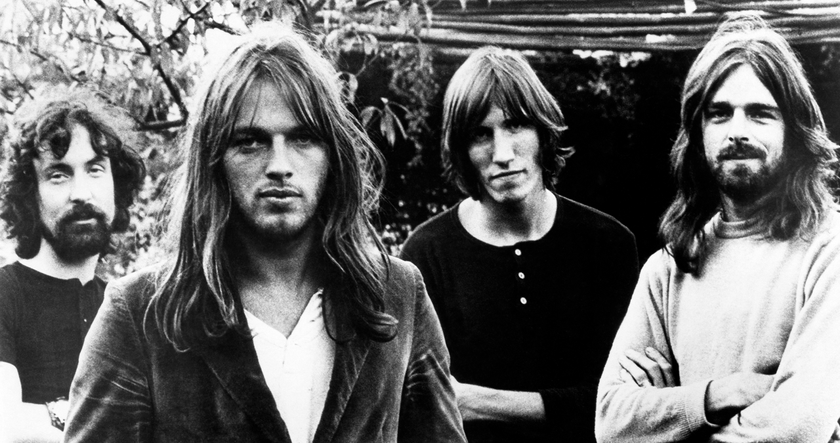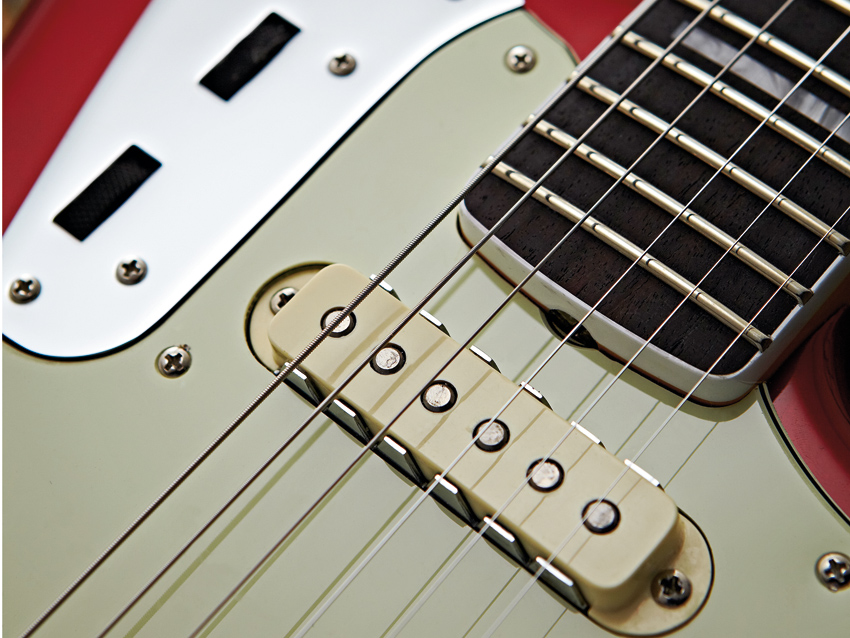MusicRadar Verdict
A perfectly good Jaguar. But does it really broaden the appeal of what was a truly oddball Leo Fender design?
Pros
- +
Classy, nicely made anniversary model.
Cons
- -
It lacks those classic '60s tones in favour of more gain-ready flavours.
MusicRadar's got your back

Fender 50th Anniversary Jaguar

Fender 50th Anniversary Jaguar

Fender 50th Anniversary Jaguar
With a short scale length of 610mm (24 inches), a seemingly over-complex dual rhythm/lead circuit control array and a vibrato that appears low-tech at best, the Jaguar is a strange cat.
The 50th Anniversary Jag isn't a direct replica of the original: the pickups, as on the Classic Player Jaguar Special, have been given more output, the neck pitch slightly increased and the tailpiece assembly has been moved closer to the bridge by about 22mm (to, in theory, increase downward pressure on the bridge).
"On the 50th Anniversary Jaguar, the original's more delicate, highly retro and evocative sounds are replaced with a hotter tonality with quite an upper-mid push that clouds the 'Fender-ness' a little."
Then there's the bigger medium jumbo frets on the modern, flatter Fender radius fingerboard - 241mm (9.5 inches) as opposed to 184mm (7.25 inches). Visually though, it's pretty much the same deal.
The neck not only feels short, it feels quite thin, enhanced by a shallow 'C'-section - 20.7mm at the first fret, 22.8mm at the 12th. It's a tidy job though: the binding and block inlay features hark back to 1965 and 1966 respectively, the original '62 being dot inlaid and unbound.
Aside from the different location of the vibrato tailpiece, and the omission of the flip-up string mute that still graces the American Vintage model, the vibrato and bridge are virtually identical to the original. So we get the six threaded-rod saddles, adjustable for height and intonation, which sit in the tray of the bridge.
It rocks on the tips of two needle-point screws sitting in oversized body ferrules. The strings
top-load at the back of the vibrato assembly. Forward of that is a tension-adjustment screw for the large hidden spring and in front of that is the trem-lock.
When adjusted correctly, this can be moved backwards to stop the vibrato's up-bend, but not down-bend, without changing the overall pitch. The long arm simply push-fits into the protruding collar giving a slightly sloppy yet flexible feel, more Bigsby-like than the Stratocaster's more precise vibrato.
The Jaguar's pickups (with their distinctive 'saw blade' partial shields that help focus the magnetic field) direct-mount to the body, but are height adjustable. Fender has upped the output considerably. Using a DC ohm meter reading to measure the pickup output you can see the change: they're nearly double those of the American Vintage's pickups.
The rhythm circuit, engaged with the uppermost slide switch on the bass-side chromed control panel pulled up, voices just the neck pickup with its own volume and tone roller controls. Pushing that slide switch downwards engages the lead circuit, controlled by the conventionally placed volume and tone controls on the lower chromed control plate.
The third chromed plate houses three slide switches. The top switch (pulled up) voices the neck pickup, down is off; it's the same deal for the middle switch which controls the bridge pickup. The lower switch is a high-pass filter - down is off; when up, we lose some mids and lows for a brighter tonality.
Sounds
To get into Jaguar world we started our test with a new American Vintage '62. Initially it seems weedy, bright and a little bass-light. But dialling in a clean Fender valve amp tone with reverb, generous bass and some mid-range scoop, we're transported back to the '60s, surf 'n' all.
The high-end attack from the bridge pickup will get you heard in the densest of mixes, the twin pickup mix is more three-dimensional with added weight and a really percussive, almost metallic attack.
The neck pickup, which sort of sounds like a Strat's middle pickup, retains plenty of high-end with a more fundamental depth - it's certainly bright enough as a 'lead' pickup for many of us. Switch to the rhythm circuit and even with both roller controls full up it's like you've engaged a 'muffle' switch.
The 50th takes us on a different route. Those more delicate, highly retro and evocative sounds are replaced with a hotter tonality with quite an upper-mid push that clouds the 'Fender-ness' a little.
This pup is begging for gain so we don't stay too long in the '60s. And that's the strange thing: upping the amp gain and adding some front-end boost, the Jag takes on its more modern voice. Edgy distortion, wiry leads… it's nastier, punkier, way more CBGBs.
Ulimately, we have to ask whether this is such a bonus. The 50th Anniversary Jaguar is a nice piece, and takes us to a slightly more contemporary place, but does it really bring anything new to the table? It's pretty much just a USA-made version of the cheaper Mexican-made Classic Player Jaguar Special.
Dave Burrluck is one of the world’s most experienced guitar journalists, who started writing back in the '80s for International Musician and Recording World, co-founded The Guitar Magazine and has been the Gear Reviews Editor of Guitarist magazine for the past two decades. Along the way, Dave has been the sole author of The PRS Guitar Book and The Player's Guide to Guitar Maintenance as well as contributing to numerous other books on the electric guitar. Dave is an active gigging and recording musician and still finds time to make, repair and mod guitars, not least for Guitarist’s The Mod Squad.

“I’ve often wondered if it was the Devil grinning up at me, or God smiling down on me. I still haven’t figured out who had the final say”: How a feat of spontaneous creativity resulted in one of Pink Floyd’s most majestic moments

“It's transparent when not in operation, crisp when looping, and handles high-gain and complex audio sources with ease”: TC Electronic Ditto 2 Looper review

“Instead of pairing a new booster inside this new pedal, think of it as changing lanes inside the pedal”: Mythos and That Pedal Show team up for the Argo Boost Deluxe – an octave fuzz with a switchable boost









